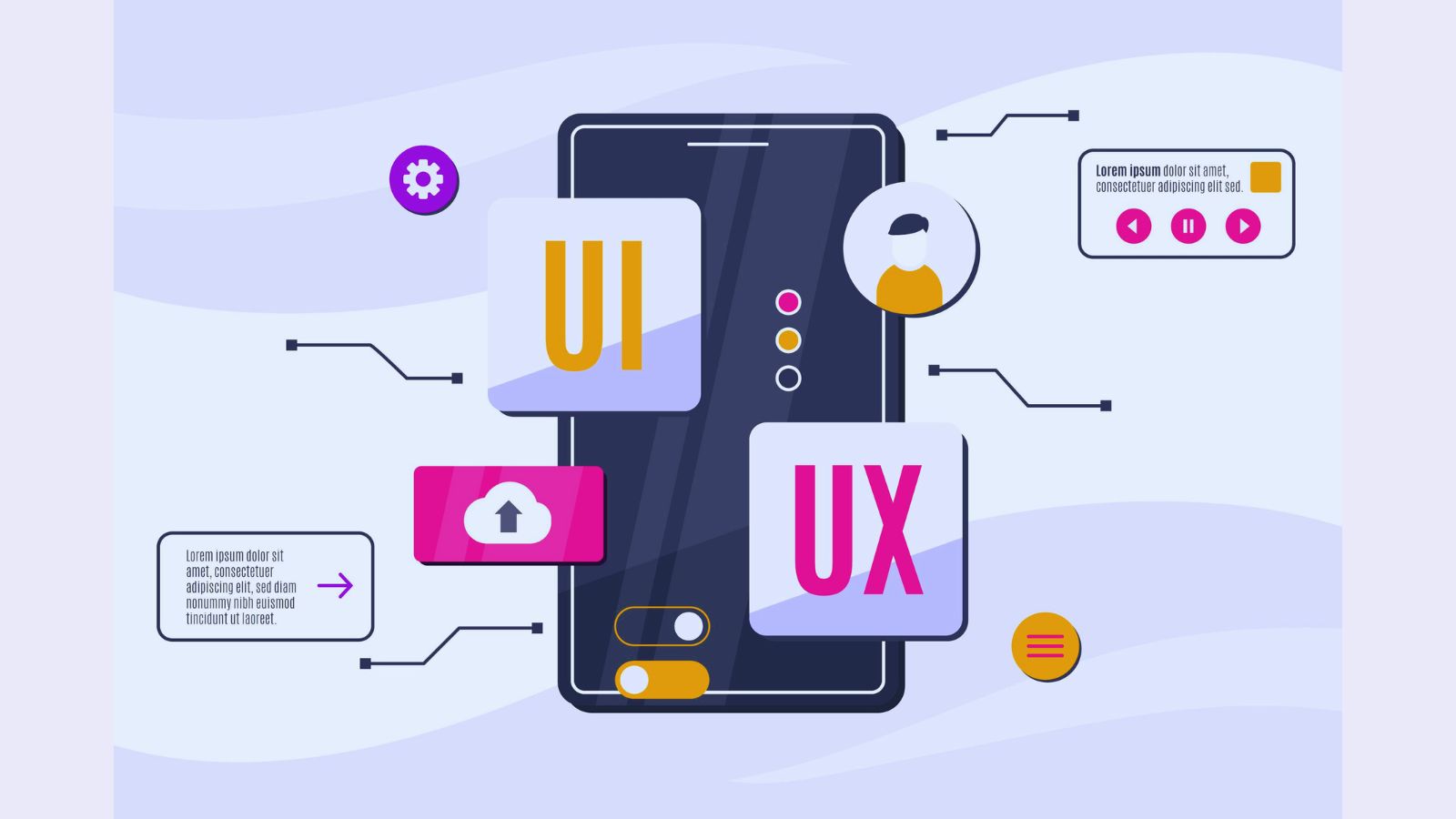
The importance of UI/UX design, in achieving success in mobile app development cannot be overstated. UI/UX design plays a role, in shaping users perception, navigation and interaction with the app. In today's age mobile app development has become an aspect of the technology industry. User Interface (UI) refers to the visual and interactive elements of a digital product or system that allow users to interact with it. It includes all the visual components, such as buttons, menus, forms, icons, and layouts, that users see and interact with when using a website, application, or any digital interface. User Experience (UX) encompasses the overall experience and satisfaction that a user gains from interacting with a product, system, or service. It involves the user's emotional, cognitive, and perceptual responses as they navigate through the different aspects of a digital interface or engage with a physical product. In essence, UI focuses on the design and presentation of the interface elements, while UX is concerned with the broader experience and how users feel and interact with the product as a whole. User Experience, often abbreviated as UX, refers to the overall interaction a user has with a product, system, or service. In the realm of mobile app development, UX design focuses on crafting an intuitive and seamless journey for users. It encompasses factors such as ease of use, accessibility, and user satisfaction. When users navigate through an app effortlessly and achieve their goals efficiently, they are more likely to engage with the app and even become loyal advocates. While UX focuses on the user's journey, UI design pertains to the visual elements and layout of the app. An appealing and cohesive UI not only enhances the app's aesthetics but also contributes to the overall user experience. In the realm of mobile app development, UI/UX design plays a pivotal role in determining the success and popularity of an application. The user's first interaction with an app leaves a lasting impression, and a well-designed UI/UX can significantly influence their decision to continue using the mobile app. Here's how effective UI/UX design contributes to a mobile app's triumph: A visually appealing design captivates users from the moment they launch the app. Vibrant colors, balanced typography, and eye-catching graphics contribute to a memorable first impression. An app's visual design should resonate with its target audience and convey the app's purpose effortlessly. User-friendly navigation is paramount to keep users engaged. Intuitive navigation ensures that users can effortlessly explore different sections of the app without feeling lost. A well-organized navigation structure reduces user frustration and enhances the overall app experience. The onboarding process sets the tone for user engagement. UI/UX designers create a seamless onboarding experience that guides users through the app's features and benefits. Interactive tutorials, tooltips, and user-friendly registration processes contribute to a positive start. UI/UX design helps in establishing and maintaining consistent branding across the app. Consistency in visual elements, such as color schemes, logos, and typography, reinforces brand identity and fosters trust among users. Inclusive design is a hallmark of successful UI/UX design. Mobile apps should be accessible to users with disabilities, ensuring that everyone can use the app regardless of their physical or cognitive abilities. This not only expands the user base but also reflects a commitment to social responsibility. Efficient UI/UX design goes hand-in-hand with app performance. Design decisions such as minimizing load times and optimizing animations contribute to a smooth user experience. Users tend to abandon apps that are slow or unresponsive, underscoring the importance of performance optimization. UI/UX design revolves around understanding user needs and behaviors. Through user research and testing, designers gain insights into user preferences, pain points, and expectations. This user-centric approach allows for the creation of tailor-made experiences that resonate with the target audience. Engaging users and keeping them invested in the app is a challenge that effective UI/UX design addresses. Interactive elements, gamification, and personalized content recommendations boost user engagement and encourage prolonged app usage. A well-designed UI/UX minimizes the occurrence of user errors. Clear call-to-action buttons, intuitive iconography, and error prevention mechanisms ensure that users can accomplish tasks without frustration. UI/UX design has the power to evoke positive emotions in users. Well-crafted animations, thoughtful micro interactions, and delightful surprises contribute to an emotional connection between the user and the app. 1. Instagram: 2. Uber: 3. Headspace: By understanding user needs, designing intuitive interfaces, and creating engaging experiences, developers can build apps that stand out and resonate with their users. In today's competitive app landscape, UI/UX design directly influences business success. Positive user experiences lead to higher user retention rates, increased user engagement, and ultimately, improved ROI. In the world of mobile app development, UI/UX design is the backbone of success. A well-crafted design not only makes the app visually appealing but also enhances user engagement, satisfaction, and loyalty. By focusing on user needs, streamlining interactions, and ensuring accessibility, developers can create mobile apps that leave a lasting impact. Get in touch with us or Email us at sales@iihglobal.com to hire UI/UX designer for crafting a successful mobile app for your business.
However, behind every successful mobile app lies a well-thought-out UI/UX design that plays a pivotal role in capturing users' attention, enhancing usability, and ensuring a seamless experience. In this blog, we delve into the significance of UI/UX design in the realm of mobile app development, exploring how it influences user satisfaction, engagement, and overall success.Defining UI (User Interface) and UX (User Experience)
The UI is designed to facilitate smooth and intuitive interaction between users and the underlying functionalities of the product. A well-designed UI aims to be visually appealing, user-friendly, and efficient in guiding users to perform their desired actions.
A positive UX is achieved by understanding user needs, preferences, and behaviors and designing the product in a way that meets those needs seamlessly. UX design considers factors like ease of use, accessibility, efficiency, and delight to ensure that users have a meaningful and enjoyable experience while achieving their goals.
Both UI and UX are critical aspects of product design, as they contribute to creating products that are not only functional but also appealing and user-centered.Importance of UI/UX Design in Mobile App Development
1. Creating a Seamless User Experience:
Key Components of a Superior User Experience:
2. Crafting an Aesthetically Pleasing User Interface
Fundamental Aspects of Effective UI Design:
The Role of UI/UX Design in Successful Mobile App Development
1. Captivating Visual Design
2. Intuitive Navigation
3. Seamless Onboarding Experience
4. Consistent Branding
5. Enhanced Accessibility
6. Optimal Performance
7. User-Centric Approach
8. Increased User Engagement
9. Minimized User Errors
10. Positive Emotional Impact
Case Studies of Successful Mobile Apps
Instagram's success can be attributed to its clean and intuitive interface. Its simple navigation, use of icons, and consistent visual design contribute to a visually appealing and user-friendly experience. The focus on visual content, such as photos and videos, aligns well with the platform's design, keeping users engaged.
Uber's success lies in its straightforward and efficient user experience. The app's easy-to-use interface, clear ride-hailing process, and real-time tracking provide a stress-free experience for users. The use of location services and real-time updates enhances trust and convenience.
Headspace's success is driven by its calming and user-centered design. The soothing color palette, animations, and simple navigation align with its meditation and mindfulness focus. The step-by-step onboarding process eases users into the app's functionality.The Business Impact of UI/UX Design
Advantages of Prioritizing UI/UX Design in Mobile App Development:
Staying Ahead in the Mobile App Landscape
As the mobile app ecosystem continues to evolve, the role of UI/UX design becomes increasingly crucial. Creating apps that not only meet users' functional needs but also engage their senses is the key to standing out in a crowded marketplace.Steps to Stay Ahead with UI/UX Design:
Conclusion








